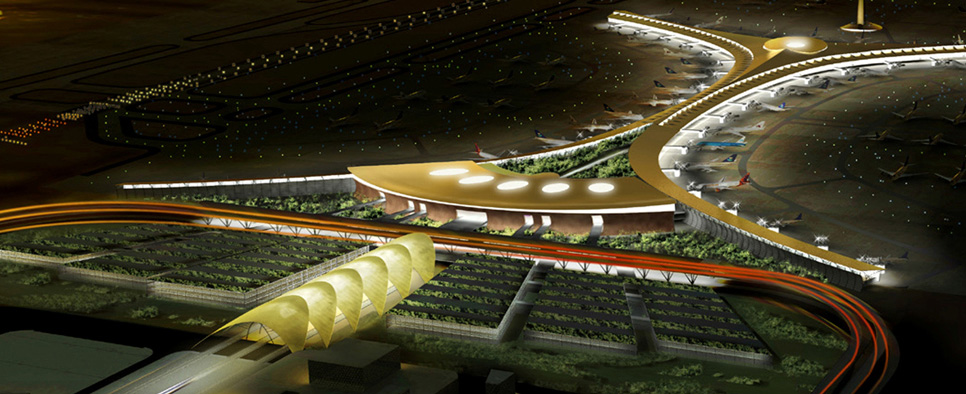Glare and glint analysis to ensure safe operations at Saudi Arabia’s busiest airport
King Abdulaziz International Airport (KAIA) in Jeddah is the busiest airport in Saudi Arabia. Situated near the Great Mosque at Mecca, KAIA is designed to manage the enormous influx of pilgrims during the Hajj each year. The airport can accommodate more aircraft than any other airport in the world; with its specialized Hajj terminal in use, it can handle more than 80,000 passengers at once.
Photos


Services provided
The Challenge
As airport operators work to optimize the safety of their facilities – a top priority at any airport – one important task is ensuring that reflections from terminal building façades and other structures don’t distract pilots, air traffic controllers, or other crews as they go about their jobs. When it comes to rectilinear buildings with standard windows, understanding glare effects is usually a fairly straightforward task. But as building forms become more complex – as KAIA’s facilities are – it becomes harder to intuitively understand where reflections may go and how long they may affect a given location. Detailed simulations can help operators gain deeper insight into glare effects at their facilities to ensure safety in the air and on the ground.
Our Approach
Operators retained us to analyze the potential for glare from the airport’s facades in the airspace surrounding KAIA. We carried out extensive simulations – modeling every hour of every day, across an entire year of operations – at a variety of locations around the airport. We focused in particular on typical take-off and approach paths, taxiways, maintenance areas and the air-traffic control tower. Our goal was to understand the frequency and durations of any reflections that could affect the ability of pilots, air-traffic controllers and ground crews to safety and effectively do their jobs.
The Outcome
Based on our analysis, we were able to provide the airport’s design team with a detailed understanding of the potential impacts of glint and glare on airport operations. We also offered custom, data-driven mitigation options for specific portions of the airport façade – including shading devices to intercept reflections from particular areas of the airport roof, and the application of non-reflective coatings to specific sites on terminals and aprons.